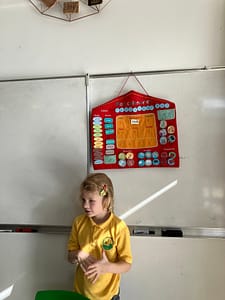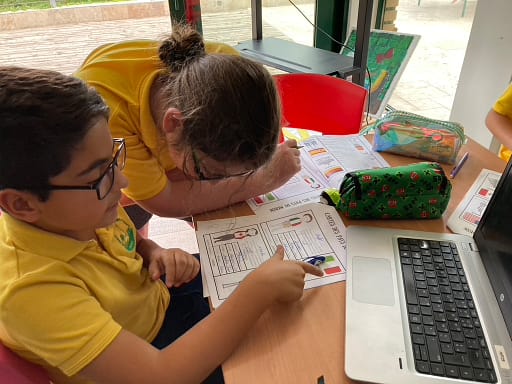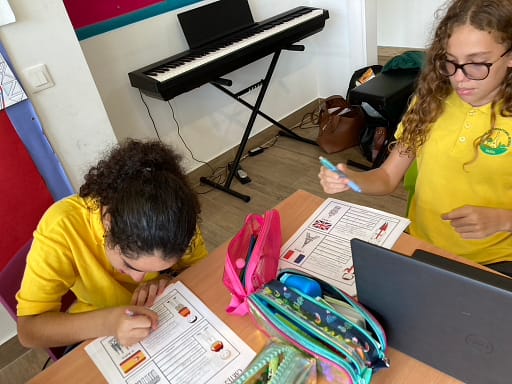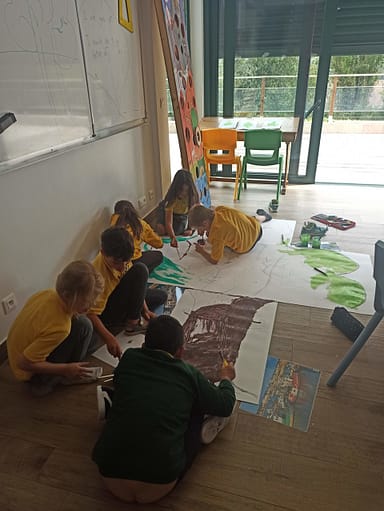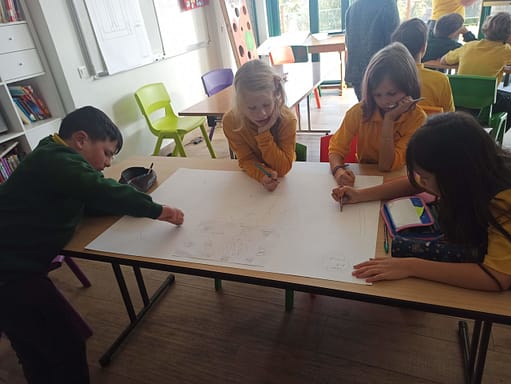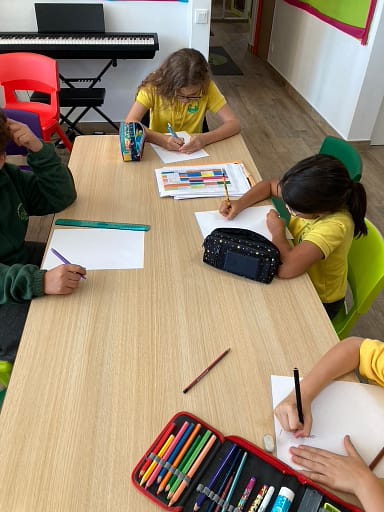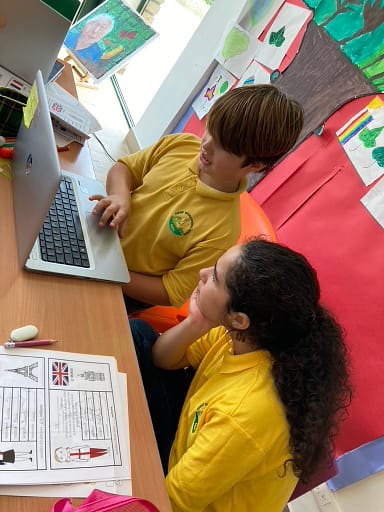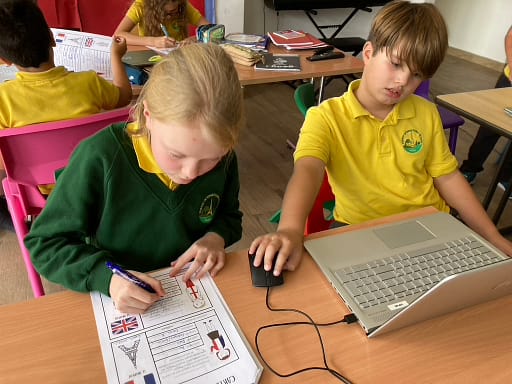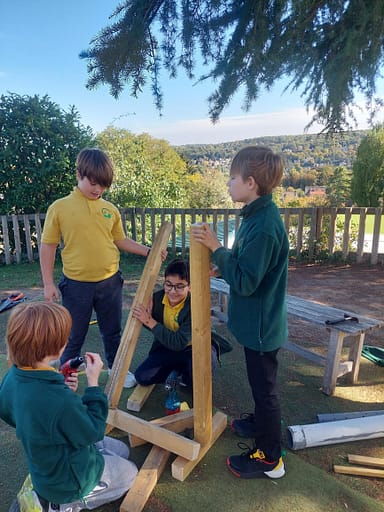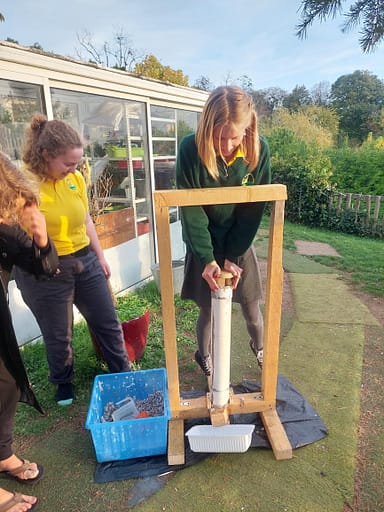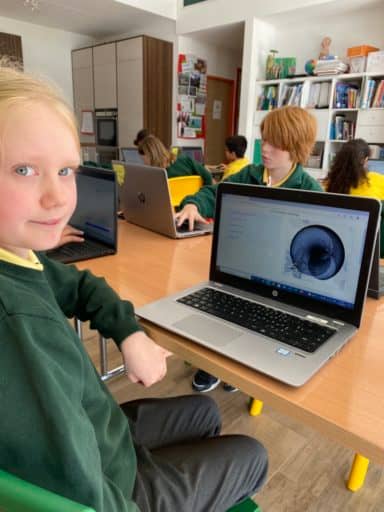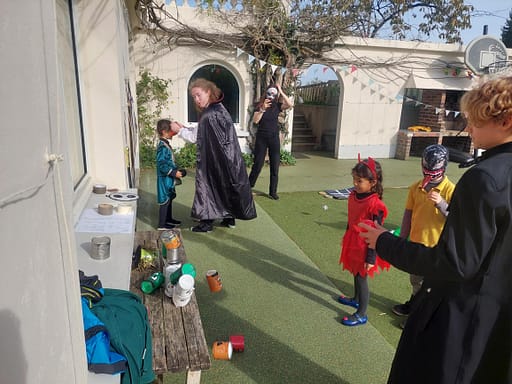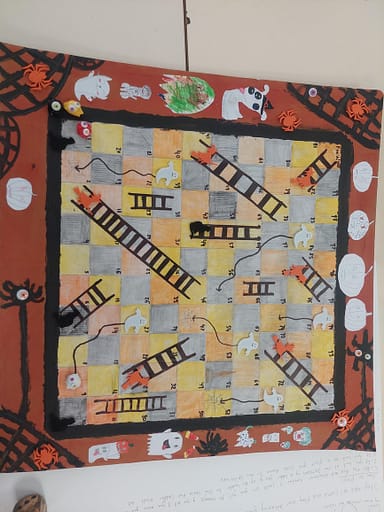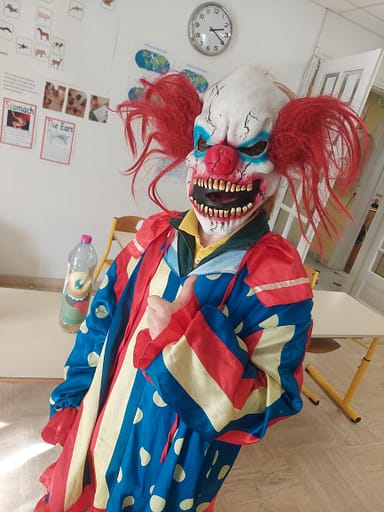English
This term Oak learnt about genre, identifying a wide selection of books into the different categories. They focused on adventure and fantasy and noted how many features are shared but how there are distinct differences. They looked at the different stages of a fantasy story, from the introduction or exposition to the incident that sets off the action through to the story’s resolution. The class then wrote their own opening to an adventure or fantasy story.
We used the model texts to examine the use of adjectives and adverbs, noting how they bring colour and life to the story and help the reader to visualise a scene.
We also focused on pronouns, when and how to use them. The class are also learning to conjugate the many irregular English verbs and are practising using them in the present, past and future tenses.



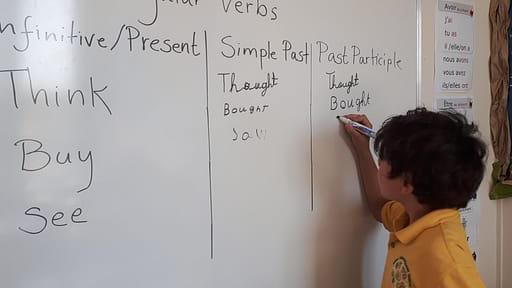
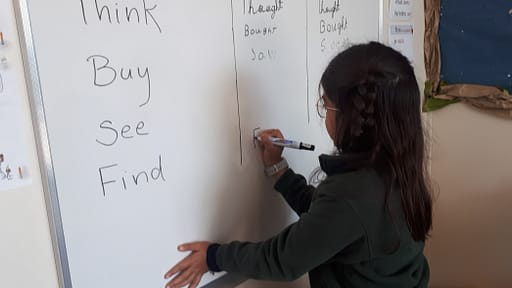
French
Beginners Group with Joanna
The students have had a busy first term revising (for those who began learning French last year) & learning new vocabulary. We are beginning to grasp the basics of what may seem the rather daunting French grammar/conjugation rules in a fun, yet educational way with lots of visual prompts, class conversations as well as with the ‘Zig Zag+2 Méthode de Français’ workbooks/audio guide and through learning poems/songs with our classmates.

The method we use in class to learn French in a fun & educational way. 


Sorting out vocabulary for the past, present & future into the right categories. 

Working together 
The final result. 
A board game ‘tout sur moi’ (all about me). 
A game to learn days of the week, months, seasons. 
Poems on display that the students learned in class about autumn. 
Intermediate Group with Christine
As soon as Sophie and Vega joined the Elm and Cedar intermediate level in October, they took part in the presentation of the daily calendar which helps them to learn and ask each questions about the days of the week, the date, the weather, the season, some activities, their mood… Everyone really appreciates this interactive activity which takes place at the beginning of each lesson. They also learned how to tell the time.
Sophie and Vega have their own reading and exercises adapted to their level. Meanwhile they also share some activities with the rest of the class on some specific topics for instance the presentation of class rules. Having both good French oral skills, they were part of the ‘girls team’ in one game where the older ones had to ‘build’ questions on the basis of the different themes seen in their first module of their learning book (the general topic was about school in France).

Reading method 
Reading book
After the holidays, we will go back to learning, reading and writing with Ratus and other reading material. We will focus on the topic of ‘The Home’ together with Cedar and Elm classes and we will conclude this period with a Christmas song.
Advanced Group with Marie
Durant cette période, les élèves ont étudié plusieurs notions:
en grammaire: la phrase et ses caractéristiques (formes et types), la phrase simple et complexe (1 seul ou plusieurs verbes), la phrase verbale et a-verbale, le nom et le groupe nominal, les déterminants, les pronoms, l’adjectif, les mots invariables ainsi que la nature/classe grammaticale des mots.
en conjugaison: les temps du passé, présent et futur, le verbe et son infinitif, les verbes d’action et les verbes d’état, le présent de l’indicatif de tous les verbes, l’imparfait des auxiliaires être et avoir ainsi que des verbes du 1er groupe.
en vocabulaire: le champ lexical du mythe et du conte autour du monstre, utilisation du dictionnaire.
en orthographe: 3 dictées ont été effectuées.
en mémorisation: apprentissage de 2 poésies “Ponctuation” et “Automne”
en littérature: 2 romans ont été lus et étudiés (selon le niveau de difficultés):
- Emilie et le crayon magique d’Henriette Bichonnier
- Histoire à la courte paille de Gianni Rodari
5 évaluations ont eu lieu depuis le début de la rentrée:
- 1 évaluation diagnostique qui permet d’établir le niveau de l’élève et de voir ainsi quelles compétences il a acquises, et celles qui sont à consolider.
- 4 évaluations portant sur la phrase, le présent de tous les verbes, la nature/classe grammaticale des mots, l’adjectif épithète ou attribut et l’imparfait.
French IMYC with Marie
Cette première période avait pour thème “Identité et Communauté”.
Dans un premier temps, les élèves devaient dessiner un de leur camarade (tiré au sort) et les autres devaient deviner qui c’était. Puis, nous avons étudié le monde pour ensuite converger vers l’analyse de l’Europe (d’un point de vue géographique mais aussi politique).


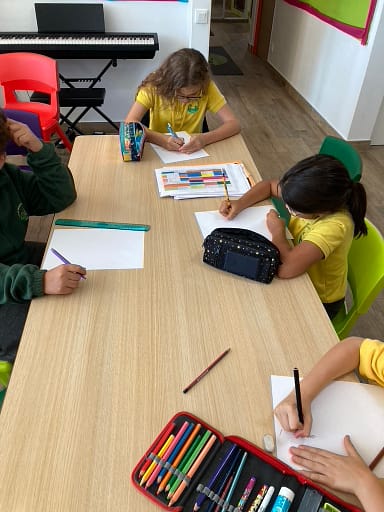

Au travers de leurs recherches, les enfants ont découvert et ont appris pourquoi et comment s’était formée l’Union Européenne.
Nous avons abordé plusieurs points :
– les différents continents et pays du monde et la recherche des caractéristiques de plusieurs pays (capitale, monnaie, langue parlée…)
– la formation de l’Europe (son histoire)
– les 27 pays qui la constituent
– les symboles de l’Europe
– les traités qui l’ont fait évoluer
– la politique de l’Europe
Par groupe de 3, ils ont travaillé sur un aspect de l’Europe. Ils ont élaboré des “posters” qui ont été assemblés à la fin. Puis ils ont répondu à un quizz “Jouons avec l’Europe”.
Ensuit, nous avons analysé certains monuments européens les plus connus avec un petit film projeté en cours:
Enfin, nous avons aussi appris 3 chansons: Dire bonjour c’est joli, L’oiseau et l’enfant, We can make a difference.
Spanish
Mathematics
In Number/Place Value:



Oaks worked on counting, reading, writing and ordering four- and five-digit numbers. The children ordered and compared three-digit and four-digit numbers and positioned them on the number line. ‘Crocodile Charlie’, who is really greedy, always eats the largest numbers. He showed the children where to use greater than > and less than < signs. The children practised and refined their written methods for addition and subtraction and then discovered or perfected grid multiplication and chunking division methods. Oaks then solved one-step and two-step multiplication, addition and subtraction problems involving numbers, money and measures.
In Number/Fractions:
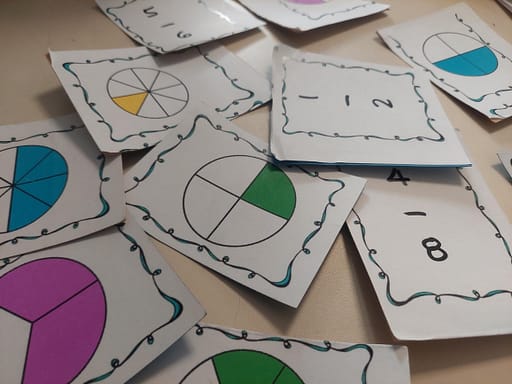
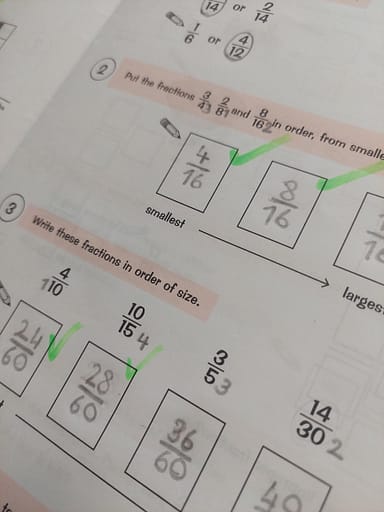



During this unit, Oaks practised finding the equivalent fractions while analyzing different bar and pizza diagrams and then moved onto multiplying/dividing the numerator and denominator by the same number. The children can confidently add and subtract fractions with the same denominator and know how to simplify fractions or write the improper fraction as a mixed number.
Science
First Term was a great pride to Oak class, who enjoyed many scientific concepts in biology. All students made minuses observations to identify the different parts of plants and their functions. Students were introduced to photosynthesis and highlighted the importance of Light, water, and Carbone dioxide in plant growth and food making process.
We had the opportunity to learn about Greenhouse effects and to grow some seeds inside a beautiful Greenhouse that they have the chance to make at school with Mr Kralka.





At the end of the term Oak discovered more about leaving things classification and Human body systems like the circulatory system and respiratory system.
History
During the term, the Oak class looked at the idea of chronology, making sense of how historians talk about time. They also looked at Stone, Bronze, and Iron Age, investigating how people lived and which materials they used to make objects for their everyday life. They learnt how stone, bronze and iron were used to make not only hunting weapons but also house and decoration objects.

Geography
Oak learnt about the Solar System this term and made a poster featuring some key information about each of the eight planets that revolve around the sun. They know the order of proximity to the sun of each planet, about the ‘Gas Giants’ and the time it takes the different planets to orbit the sun. They also learnt about earth, in the so-called ‘Goldilocks Zone’, with conditions just right to support life. They learnt that Earth spins on its axis and takes 24 hours to orbit the sun, which led to us looking at time zones and the International dateline. The class then moved on to Weather and Climate, learning the differences between these two terms and looking at the different climate zones around the world and their distinguishing features.
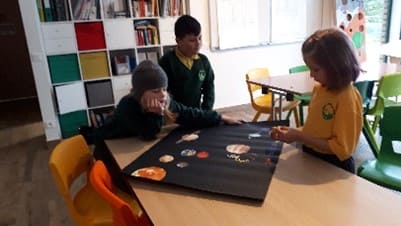
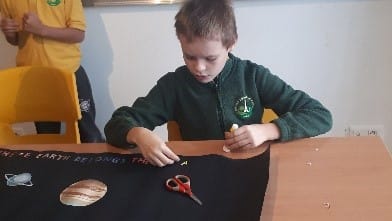
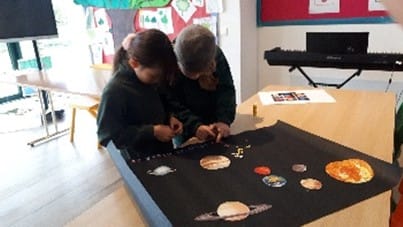


Design and Technology
Linked to our learning in Science, based on plants, we measured, estimated and solved real-life problems. We worked with different materials and carpentry tools to create our own greenhouses. The children were asked to think about the different materials that they needed to use for their specific designs. They all came up with very different ideas and were encouraged to share and discuss with each other before agreeing on the final version of their product.





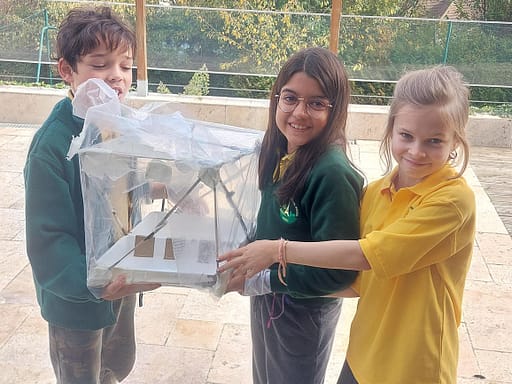


The children continued to develop their carpentry skills by applying them to creating and building ‘Eco Logs Press’ while helping out Elm Class.




Woodworking projects are extremely important for developing children’s creative and critical thinking skills. Through these projects, not only do children get to handle and smell the wood but also learn how to use the different carpentry tools. They develop their mathematical thinking, broaden their scientific knowledge and, most importantly, acquire a ‘can do’ mindset.



ART
The Oak class worked on their self-portrait, looking at the work of the Renaissance painter Giuseppe Arcimboldo. As Arcimboldo, the students moved from a naturalistic portrait to a collage portrait inspired by the autumn nature. The students went to the forest, collecting the materials they liked the most for their collages.

ICT
Oak students were introduced to a programming application called Scratch. By the end of this term they are able to create animations incorporating movement and images, use x y coordinates to move sprites on the stage, alternate between different sprite costumes, incorporating time and motion and import sounds to use in their Scratch projects. We should be proud of their fast learning and hard-work.
Global Perspectives
Oak students looked at how towns could be environmentally friendly. They considered the towns in which they lived and put together some ideas to lead their local communities supporting more actively the environment. They have created a poster displaying all their ideas and recommendation in a very creative way!
Drama Workshops
The Oak class started to get familiar with the use of the body, focusing on gestures and facial expressions as ways to express emotions and to represent actions. They have practised abstract and naturalistic freeze frames, working in groups, and collaborating with each other.
Creative Writing Workshops
Oak students started the term by creating their own personalised writer’s notebooks. They also worked on a writing stimulus based on real experience – the school’s canoeing trip – in the form of a fictional story or a journal. They used their memories – and their imagination – to create very funny and interesting pieces of writing drawn on their canoeing experience. The Oak class ended the term by looking at the role that writers have in inspiring other writers.

Forest Exploration and Mushroom hunting




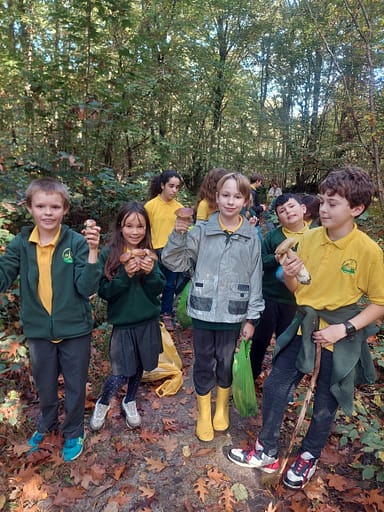



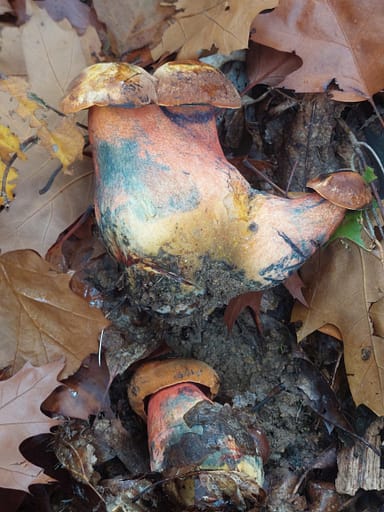




Canoeing Trip
Oak, Elm and Cedar classes canoeing on the tranquil waters of “the little arm of the Seine”.
Located between Vétheuil and Haute-Isle in the Vexin Regional Nature Park, this spectacular and secluded section of the Seine was a source of inspiration for many impressionist painters.



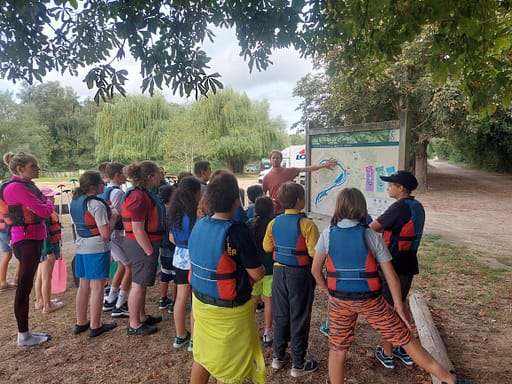



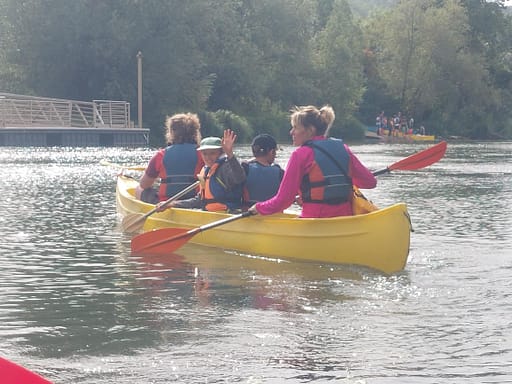

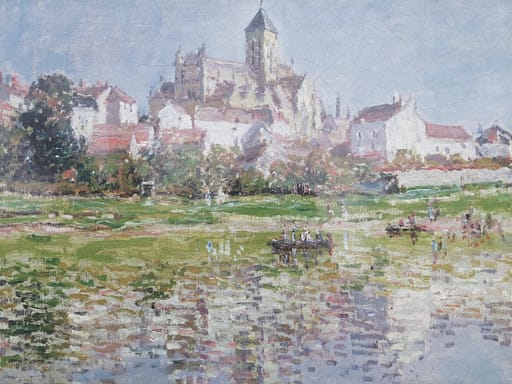

Trip to France Miniature









Halloween Celebration
Oak, Elm and Cedar students creatively collaborated together while designing their exciting Halloween activities for the rest of the school.




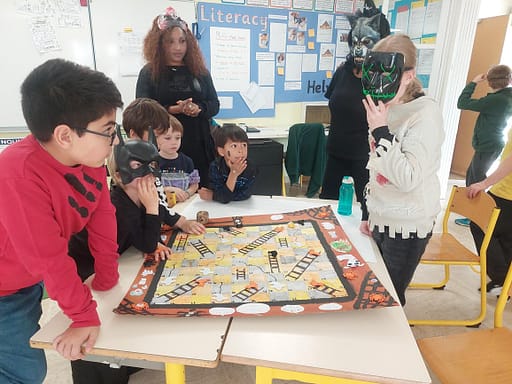



Enjoy your holiday, Oak!
FISP Team


